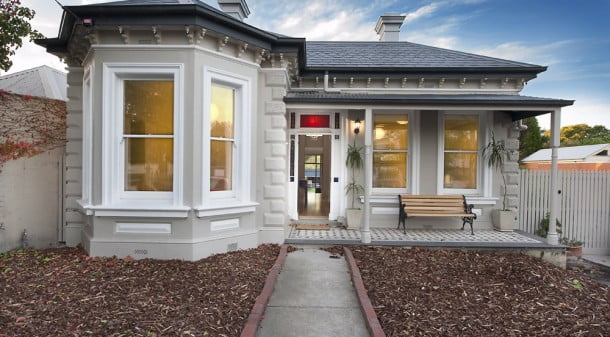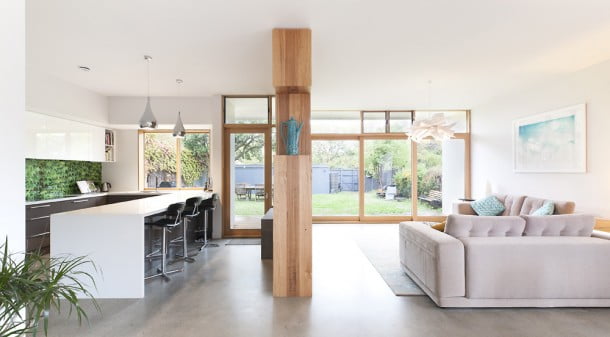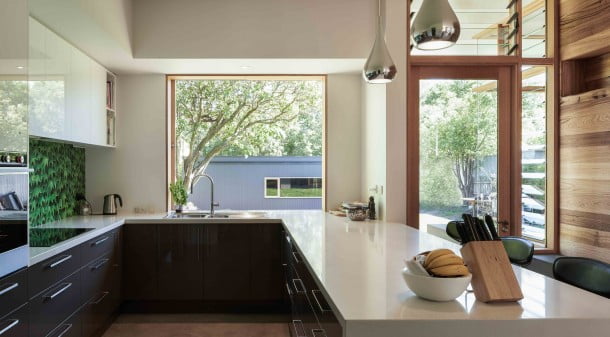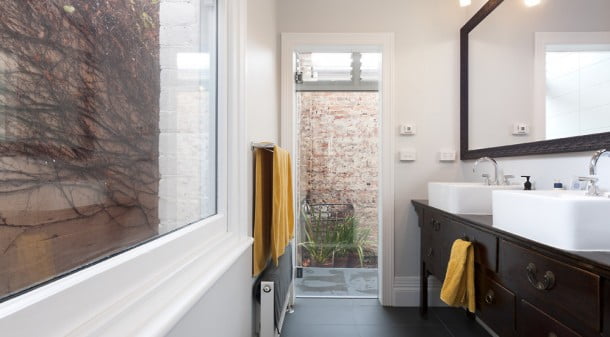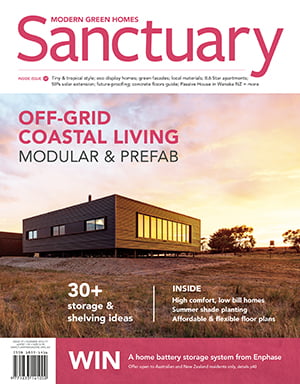Running on the sun
Going off gas and installing enough solar to cover their needs was a big part of the brief for this high-performing, comfortable extension to an 1890 house in Melbourne’s east.
When Joe and Tamsin bought their circa 1890 double brick house in Hawthorn, it was with a very clear idea of what they wanted to do. “We’d had a couple of false starts,” explains Joe – they’d first thought about renovating the house they lived in in Abbotsford for 10 years, but decided it was too small; their next place in Brunswick didn’t offer a good north orientation. “Tamsin likes gardening, and I wanted space for a garage for my classic cars. Also, we wanted to do a renovation so we were looking to buy something that needed it.”
The Hawthorn house had a large, north-facing backyard and rear access, which allowed them to see past major defects like collapsing floors and a leaking roof. “It had really nice bones at the front, but was horrible at the back,” says Joe, “and it was very run down – it hadn’t been lived in for at least a year.” They got straight onto finding a designer to help them transform the place.
ATA members and long-time readers of Sanctuary, Joe and Tamsin knew that they wanted a very energy efficient house that was well connected to the outdoors. They were also determined to get off the gas grid and go all-electric. Joe’s interest in SIPs (structural insulated panels) led him to Habitech, a Melbourne-based, multidisciplinary design and building company that manufactures its own SIPs.
Architect Chris Barnett is Habitech’s managing director and has always been interested in sustainable design. “I was exploring the most sustainable way to deliver a house, and the bit that I couldn’t find was the wall system. So I went out and designed it; we had it engineered, certified, and now we manufacture it in Melbourne.” Their SIPs are a sandwich of plywood interior cladding, an expanded polystyrene foam (EPS) core and magnesium oxide board on the outside, and are rated at R4.3 for insulation. “We use magnesium oxide board for its stability and longevity,” says Chris. “It’s made with 50 per cent sawdust, and the manufacturing process actually absorbs carbon dioxide.”
“Joe and Tamsin came to us wanting to renovate and extend, and looking for a highly insulated building fabric that they knew would work,” Chris says. He explains that because SIPs are made in a factory with a high degree of precision and arrive on site as complete wall units already insulated and clad, there’s far less scope for leaks and gaps to creep in and compromise the performance of the finished building shell. “They are quick, too – once the SIPs are up and the joins sealed, the wall’s finished.”
Habitech’s design team came up with a roomy, light extension connected to the retained part of the original house by a glazed ‘link’ that creates two courtyards. One of the rooms in the old house was divided to form a bathroom, a walk-in wardrobe and a narrow ensuite; in a nice touch, both ensuite and bathroom have glass showers overlooking the private western courtyard, created within the walls of the former kitchen. Other improvements made to the original house included new floors, a new roof, retrofitted double-glazed windows, and ceiling and sub-floor insulation.
The extension consists of kitchen, laundry, dining and living areas and opens to a north-facing deck and the garden. Its roof angles were dictated by Joe and Tamsin’s desire to install 4.5kW of solar panels, facing north. “Usually, we’d use SIPs for the roof as well as the walls,” says Chris, “but due to the angle required for the solar system, trusses were more cost effective.” The ceiling insulation is layered, first with taped and air-sealed PIR rigid foam and then conventional batts on top.
Designing the roof with the solar panels in mind allowed Chris and his team to achieve a very integrated, streamlined look. The edges of the roof are raised to be flush with the surface of the panels, and perforated metal sheets lining the eaves hide the gutters and create clean lines while still allowing any overflow from the gutters to escape.
After more than 12 months living in the house, the solar system has been producing up to 20 kilowatt hours per day in winter and 30 kilowatt hours per day in summer. They are currently logging energy production, use, and internal and external temperatures, and Chris will soon be completing a full energy study.
There’s no active cooling in the house beyond provision for cross ventilation. Heating is via hydronic slab heating in the extension and hydronic panel heating in the existing house; it’s powered by an efficient Sanden heat pump that also provides hot water.
Due to the airtightness of the SIP-based building shell, Chris also recommended installing a heat recovery ventilation (HRV) system. “Once you get a building sealed to below about five air changes an hour, you have to consider ventilation,” he says.
“Although it wasn’t totally necessary in this house due to ‘trickle ventilation’ through small panels of louvres and via the old section of the house, it’s still a good idea.” HRV works by drawing fresh air in from outside and heating it in winter or cooling it in summer using the internal air being expelled. “HRV allows you to (metaphorically) open a window without letting in cold air in winter, or hot air in summer,” says Chris. “Fresh air is important – the quality of the air adds to the quality of the space.”
Joe and Tamsin are very pleased with their ‘solar house’. “We were more focused on its performance and how we’d live in it than how it looked, but Chris and his design team did a terrific job,” says Joe. “We love how light and bright it is, and it’s really comfortable to live in. And I particularly love the showers in the courtyard.” He got his garage and workshop: also built from Habitech SIPs for the walls and roof, with the interior plywood finish left bare.
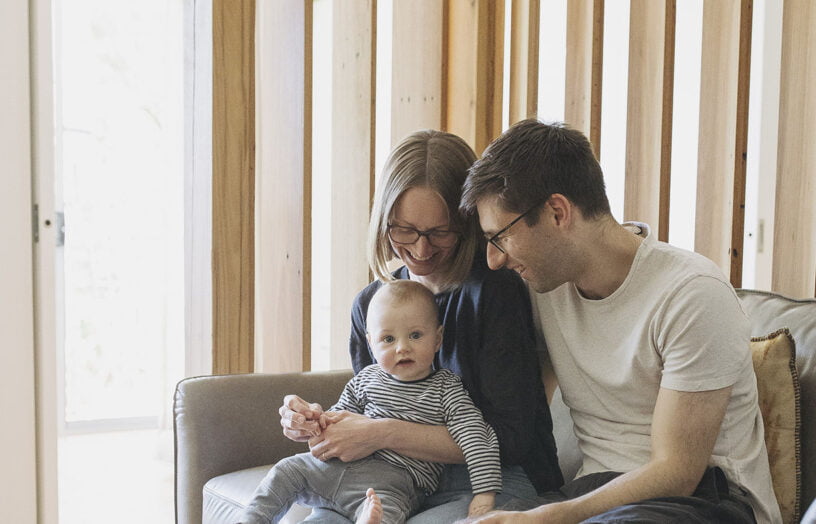 Design workshop
Design workshop
Design workshop revisited: Small space success
With some small but important changes to the internal layout based on our expert’s advice, this expanding young Canberra family is getting more out of their diminutive apartment.
Read more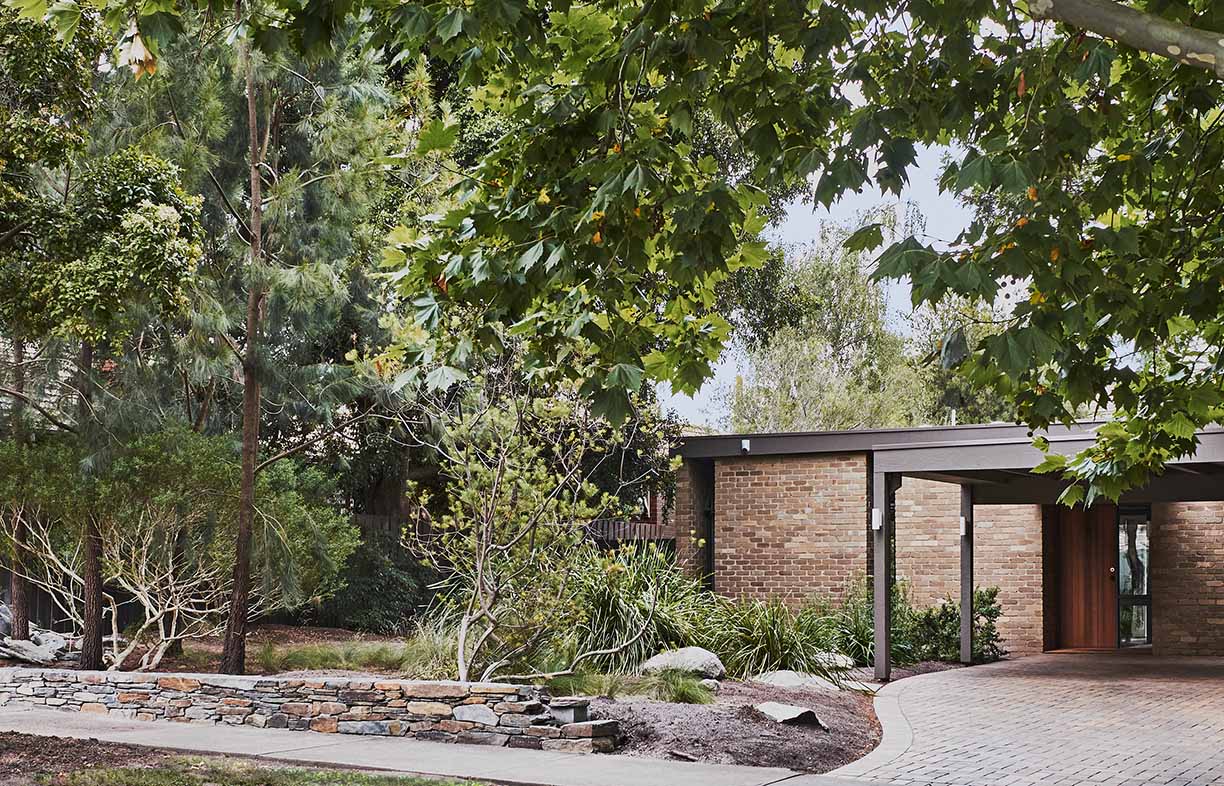 Ideas & Advice
Ideas & Advice
Energy efficiency front and centre: A renovation case study
Rather than starting again, this Melbourne couple opted for a comprehensive renovation of their well laid out but inefficient home, achieving huge energy savings and much improved comfort.
Read more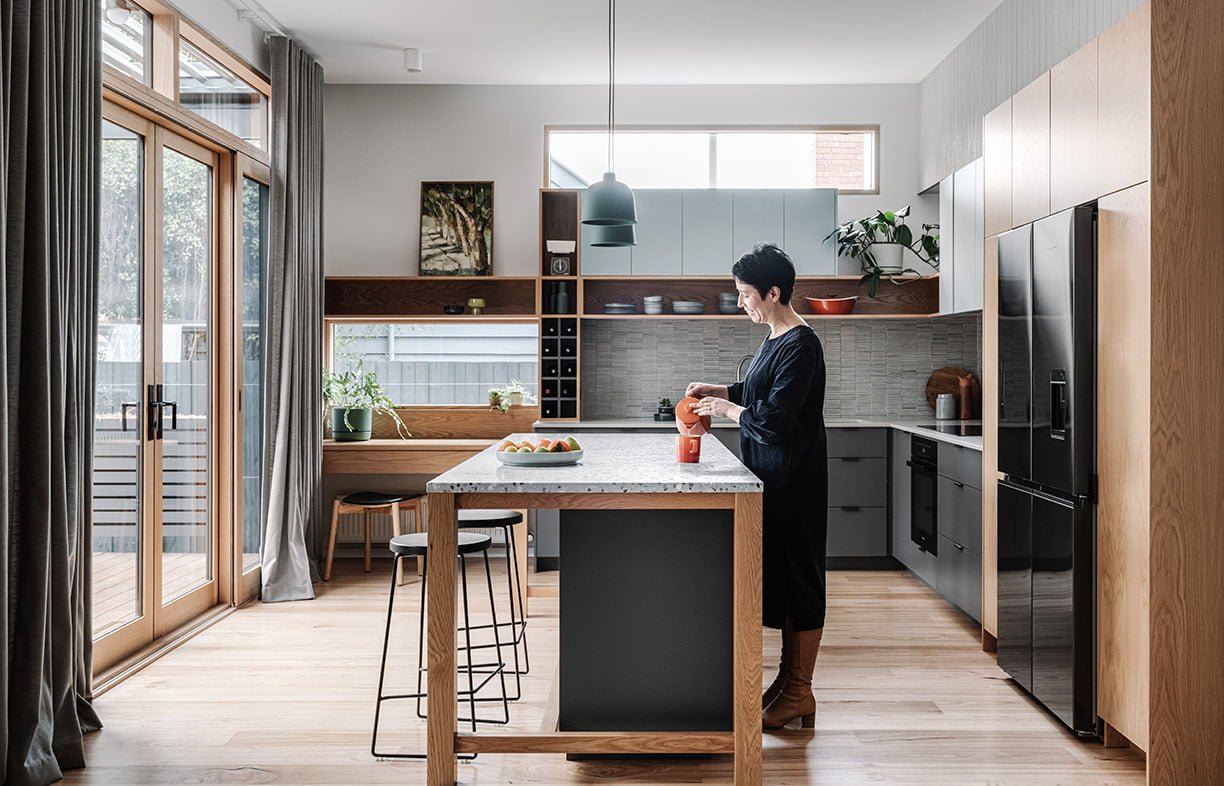 House profiles
House profiles
Sparking joy
Clever spatial planning, high levels of insulation and a switch to all-electric make this stately Melbourne period home more liveable and efficient.
Read more


